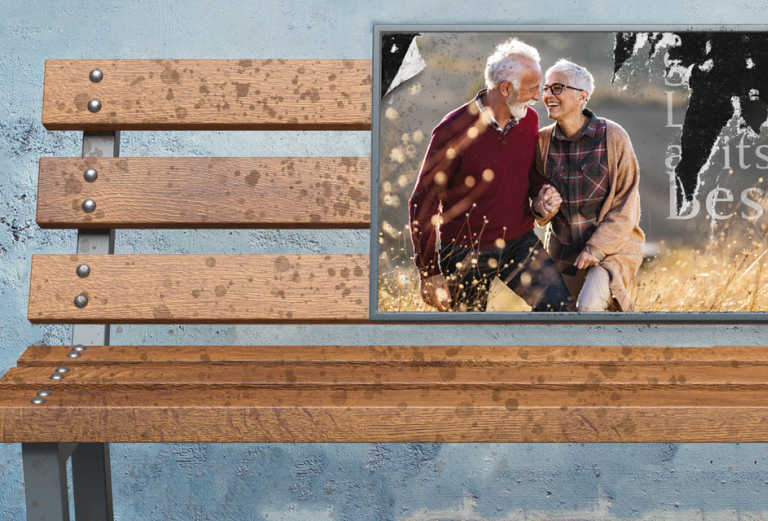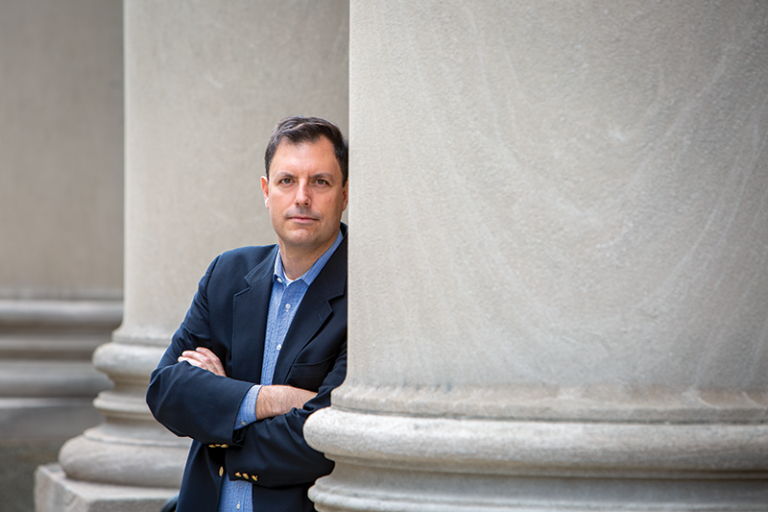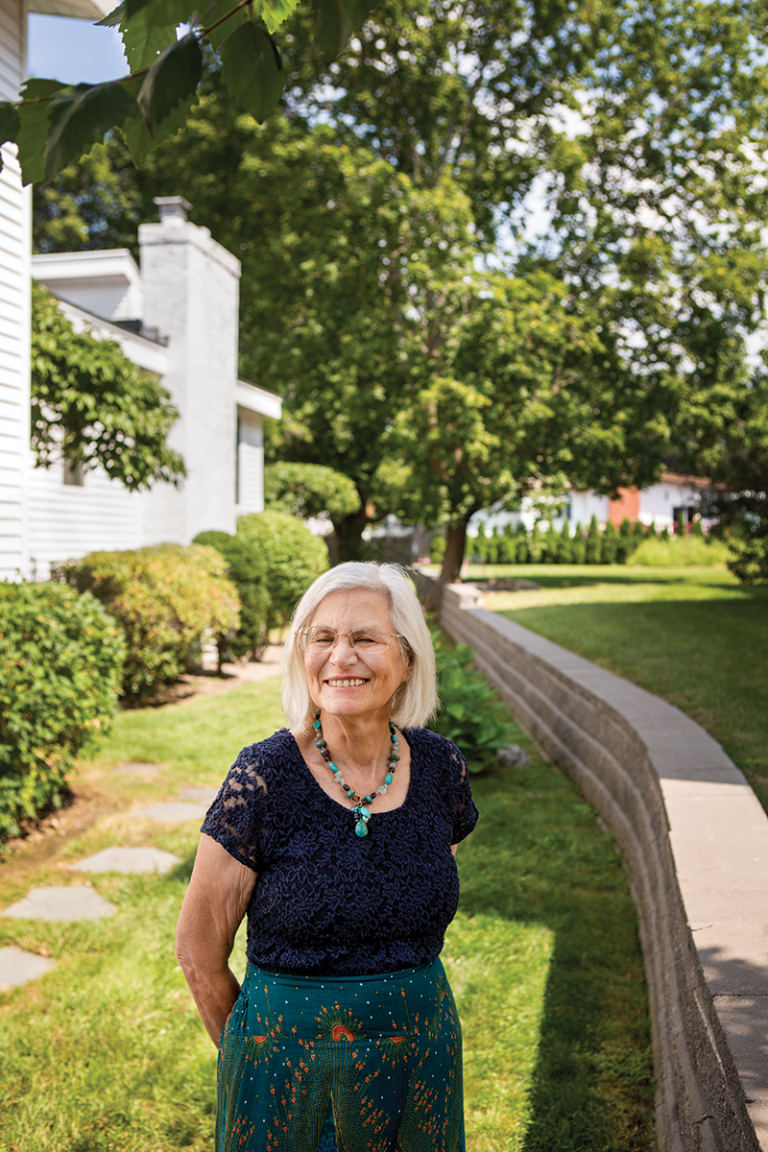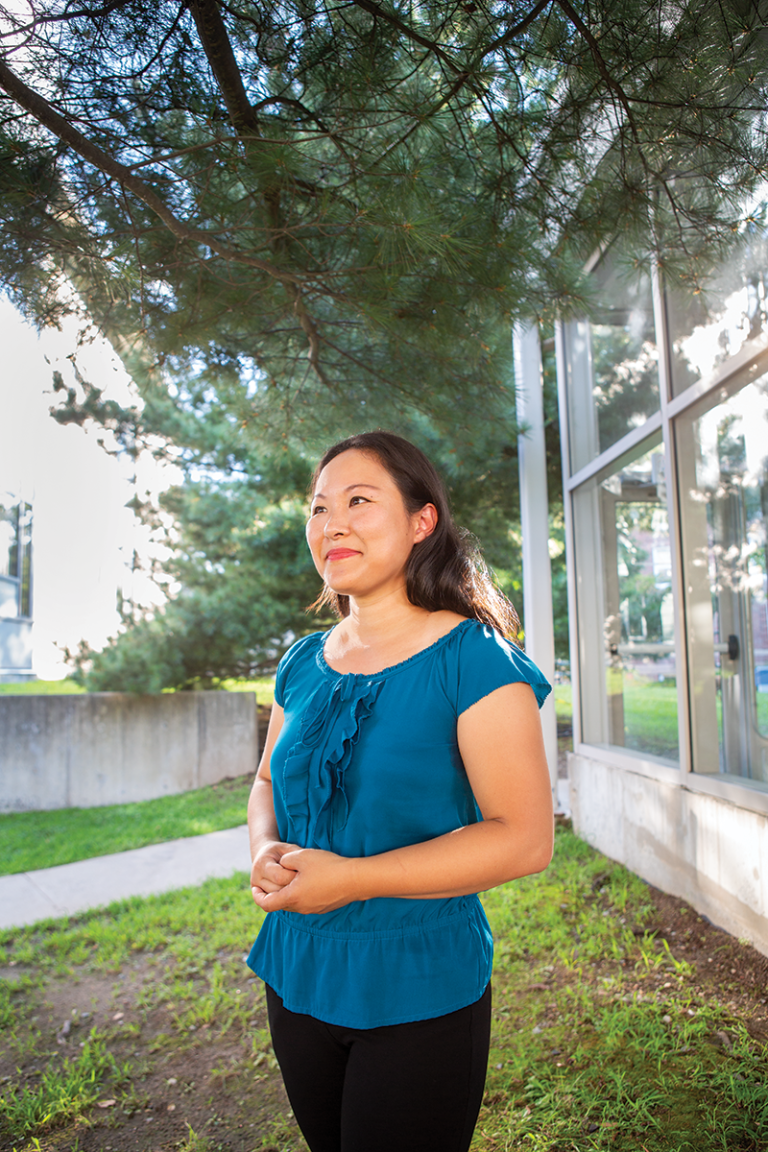A Place for Dignity in Eldercare?
As a growing number of older adults require care, some worry that respect may be a diminishing resource
- 13 minute read
- Feature

In 1965 the British band The Who released “My Generation,” which would become an anthem of its time. As the iconic guitar-smashing songwriter Pete Townshend recalls in his autobiography, Who I Am, he penned the song—with its famous line, “I hope I die before I get old”—on his twentieth birthday, in response to his car being towed at the behest of the Queen Mother. But nearly a half-century later the mellowing rock star had changed his tune. “I want to age with some dignity,” Townshend said in a 2009 interview with the newspaper The Australian. “I just want to be part of the human race.”
It doesn’t seem a lot to ask. But as the oldest of Townshend’s baby boom fans turn 75 this year and the youngest approach 60, aging with dignity, for many, is looking less attainable than ever.
“We’ve created a world where many millions of people get the opportunity to grow old,” says William Thomas, MD ’86, a geriatrician, author, and public speaker based in Ithaca, New York. “But at the same time we’re draining the dignity and worth from the experience of aging. As a society we have failed to understand that people living with frailty and dementia can have a damn fine life. We think they are a class of zombie and we’ve set up zombie facilities to store them.” Isolating people in this way, he says, reinforces the illusion that “old people can’t give, they can only receive. That’s extremely damaging, not only on a personal level but also on a cultural one.”
Breaking point
While only 2 percent of people 75 to 84 years old in the United States and 8 percent of those 85 and older live in the nation’s nearly 16,000 nursing homes, a fifth of the population dies in them, largely during rehab stays after being discharged from hospitals. Two-thirds of 65-year-olds will need long-term care services at some point in their lives, for an average of 28 months, and more than 30 percent of older adults need help with activities of daily living, which include walking, feeding, dressing, grooming, bathing, and toileting, according to the U.S. Centers for Disease Control and Prevention. Nearly a third of people older than 85 also have Alzheimer’s, which vastly increases the need for long-term care.
Traditional sources of social capital are not as relevant as they have been in the past, in part because families are smaller and people may live farther from loved ones. Problems with nursing homes, commonplace before the pandemic, were brought into stark relief early in crisis, when nearly a third of all COVID-related deaths were reported to have occurred in individuals living in these facilities.
“The system was designed to fail,” says David Grabowski, an HMS professor of health care policy, given that it relies on two beds to a room, shared lavatories, staff shuttling between home and work every day, and underpaid certified nursing assistants and orderlies working in multiple facilities. But even before the pandemic, hardly a month went by without headlines blaring a nursing home scandal somewhere in the country. While accurate numbers are hard to come by, partly the result of underreporting, in 2013 the National Center for Victims of Crime indicated that more than 25 percent of nursing home residents experienced physical abuse, nearly 20 percent endured psychological abuse, and slightly more than 15 percent suffered gross neglect.

The picture isn’t always rosy when older adults live at home, either. Not only are they vulnerable to abuse and neglect in these living situations, but study after study has shown that caregiving can cost spouses, friends, adult children, and other relatives their own health, compromise their work productivity and career opportunities, and cause them significant financial and emotional distress.
“We often view aging as a family issue and not a policy issue,” Grabowski says. “But we all pay collectively when family caregivers suffer from physical and mental health troubles and have to leave the workforce. We haven’t internalized this problem as a country and created a true system for caring for older adults. We’re in a crisis of low-quality care and underinvestment, and our current approaches are not sustainable.”
Attention required
And it’s going to get worse. By 2050, the number of adults over 65 in the United States is expected to double from the current 46 million, mirroring worldwide trends. The U.S. Census Bureau maintains that this growth may spur “greater demands for health care, in-home caregiving, and assisted living facilities,” even as the number of both professional and family caregivers is projected to decline, according to think tanks such as the AARP Public Policy Institute. At the same time there will be fewer workers contributing to Social Security, which provides the bulk of most people’s incomes after age 65, and to the payroll taxes that fund Medicare and Medicaid, which supply health insurance and long-term care, respectively, for older adults.
“We are definitely not prepared,” Grabowski says. “There are a lot of options today to change the system, and I was hopeful about big policy changes in the wake of the pandemic.” But, he continues, “I can already feel public attention turning to other issues. I don’t know if our society has the energy or enthusiasm to take this on. If the pandemic didn’t do it, what will it take?”
While the issue of childcare has been on the political agenda for decades, as a country we’re “just starting to have a conversation about eldercare,” notes Judy Kwok, an HMS instructor in medicine and a geriatrician with Cambridge Health Alliance. “Part of it is just ageism. Unlike some other countries, we don’t value older adults the way we do children, and we don’t put enough resources into their care.” Sexism and racism also play a part, experts agree. More than three-quarters of family or other informal caregivers are women, according to the Institute on Aging, and the majority are unpaid. “I’m sure if more men had to step up it would become an issue we’d pay attention to,” Kwok says.
In nursing homes—about 70 percent of which are for-profit—almost a third of direct care, housekeeping, and maintenance staff are immigrants. The relatively low wages and benefits they receive combine with high levels of burnout to create a mean staff turnover rate of 128 percent, with the rate of staffing changes at some facilities exceeding 300 percent, according to a 2021 study published by Grabowski and two colleagues at the University of California, Los Angeles. This, in turn, negatively affects the quality of care residents receive.

Another reason the problem has been back-burnered for so long is that “America is known for its relentless focus on the individual,” says Muriel Gillick, MD ’78, a physician who specializes in geriatrics and palliative care and an HMS professor of population medicine, part-time, in Harvard Pilgrim Health Care Institute’s Department of Population Medicine. Gillick’s 2017 book, Old and Sick in America, examines how forces including government regulators, insurers, drug companies, doctors, lawyers, and even, often inadvertently, families “interact to create the system we have.” But at bottom, she says, “American culture is focused on people doing for themselves. If you can’t, well, just tough.”
It doesn’t help that we sometimes focus on the wrong things. “This new Alzheimer’s drug that came out recently was so expensive,” says Kwok, referring to aducanumab, which was developed by Biogen at a cost of $2.5 billion and called “marginally effective at best” by the science news website STAT. “That’s money that could have been put toward hiring and paying our current home health aides and paid caregivers better so that they could be less stressed out, not have to work three jobs, not have to travel an hour to get to their patients because they can’t afford to live in a city. As a society we want these big magical fixes, but we don’t put enough resources into the care that really does matter day today.”
Finally, we need “greater transparency and accountability about how providers are spending money,” Grabowski says, along with a restructuring of payment systems. While about 35 percent of nursing home residents pay out of pocket or through private long-term care insurance, most stays are covered by Medicaid, which subsidizes long-term care but requires seniors to spend down any assets they may have in advance. Medicare, which kicks in at 65 and provides health insurance regardless of income, covers neither custodial care such as bathing, dressing, and eating, nor long-term care beyond one hundred days. Because Medicare is funded federally and Medicaid by both state and federal governments, “each program tries to push costs to the other and no one’s worried about the overall quality of care,” Grabowski says. Plus, Gillick points out, cutting Medicaid is one of the best ways for states to find revenue when their budgets fall short.
“And who gets shafted when you do that?” she asks. “Frail older people who can’t protest, and home health aides and others who may not be able to advocate for themselves. So yeah, it’s a mess.”
Outside the box thinking
Still, there is some good news. A few innovators are making inroads in changing the culture of eldercare. The joint Medicare/Medicaid model PACE, or Program of All-Inclusive Care for the Elderly, for example, was started in San Francisco in the 1970s in response to residents in Chinatown and elsewhere in the city who needed more care but didn’t want to go outside their communities to receive it. The 272 PACE centers nationwide today, including the one Kwok works for through Cambridge Health Alliance, provide “a care plan very tailored to the frail, complicated older adults we see,” she says. At least twice a year, everyone on the client’s interdisciplinary team—the MD or nurse practitioner, the social worker, the occupational therapist, the dietitian, the case manager, and the activities coordinator—meet with the client and family and discuss care going forward. “We are required to provide patient-centered care, whatever that means for each person,” says Kwok. “Everyone’s functional status, education, and family structure is different, and of course we also account for racial and ethnic diversity. A quote I’ve heard that sort of sums up our philosophy is, ‘If you’ve met one 90-year-old, you’ve only met one 90-year-old.’”

Research has shown that such home-based care not only saves insurers money, but reduces hospitalizations and the need for long-term institutional care, and more important, results in verifiably longer, happier lives for participants.
PACE and similar programs are in the vanguard of a concept that is increasingly driving the design of care for older adults: rebalancing. “Most long-term care today is incredibly expensive and yet patients are not getting very good quality at all,” says Grabowski. “It’s a real disconnect.” Rebalancing aims to level the scale a bit by shifting care toward home-based services and putting more control in the hands of clients and their families while also saving Medicaid money on room and board.
“Rebalancing looks at the state budget for supporting a life of dignity for older people,” says geriatrician Thomas. “It used to be that about 97 percent of it went to nursing homes. But over the past ten years that fraction is going down and the amount going to supporting older people is going up.”
Thomas, a self-described “nursing home abolitionist,” is the architect of two initiatives that have been changing lives for decades. The first, developed in the 1990s with his wife, Judith Meyers-Thomas, is the Eden Alternative, a philosophy that now guides thousands of residential communities for older adults and is based on offering residents purpose through variety, inclusion, empowerment, and independence. Among other innovations, the Thomases and those who adopted their tenets brought plants, pets—including dogs, cats, rabbits, and parakeets—and children into nursing homes for residents to care for and interact with. Now, with hundreds of sites in the United States and around the world using their model, research has shown that quality of care has improved, levels of resident engagement have increased, and staff turnover and sick days have been reduced.
Aging is a team sport. If you’re playing alone, you’re going to lose.
A decade later Thomas partnered with Steve McAlilly, a senior services executive in Mississippi, to found the Green House Project, which employs Eden Alternative values in homey, purpose-built residences. These houses have ten to twelve private bedrooms and bathrooms, higher staff-to-patient ratios, and less administrative interference. Support from the Robert Wood Johnson Foundation has allowed the concept to grow to more than three hundred locations that are either open or under development in thirty-two states, and the evidence so far is that the staff is significantly more engaged with residents, avoidable hospitalizations and readmission rates are lower, and family satisfaction is higher.
Perhaps most surprising to those who focus on costs, both interventions saw operating margins and market position tick up. Thomas concedes that currently most of the less orthodox models are run by nonprofits, but says, “You’re competing against a nineteenth-century relic. There should be some entrepreneurs out there who can beat that.”
Of course, none of the nontraditional settings coming onto the scene can ultimately succeed without changes from doctors, older adults, and families. Doctors, says Gillick, need to take the perspective of their patients more seriously, even when it seems to fly in the face of medical doctrine. “I had a patient once with very mild dementia and a fairly treatable cancer,” Gillick notes. “She had seen her sister progress through dementia, and she regarded her cancer as an opportunity to exit more gracefully from the world. Her oncologists found this tremendously perplexing, because they had a treatment that was not terrible and had a reasonable prospect for longer life. But doctors need to think about the effect of treatment on the trajectory of patients’ lives.”
Older people and their loved ones, too, need to look ahead, she maintains, but can’t do that without better communication from their health care providers. “A lot of the problems that develop in medical care result from unfortunate decisions being made,” she says. “We need to give caregivers more responsibility, and provide them with the support and education they need to make those decisions.” She thinks such a bottom-up approach would result in fewer hospitalizations, but would also require “some energizing from above” in the form of legislative changes.
“This doesn’t require some great technological fix to solve,” she says. “We kind of know how to do this geriatric care stuff, or at least how to do it a lot better than we are. It seems a shame that we don’t make the effort.”
Thomas agrees, pointing out that for aging individuals, thinking ahead extends beyond medical care to another big decision that should be made early on: where you’re going to live. “We need better communities, so people can look out for each other,” he says. He says today, the paradigm is to stay in housing that was conceived and built not for aging but for raising children. That can be very isolating, cutting older adults off from the rest of the world, when instead they could be seeking new communities and new friends with “intentionality and effort.” Thomas is now working on a framework that clusters compact single-story homes for older adults in multigenerational communities. While this type of MAGIC—multi-ability/multi-generational, inclusive community—may be an outlier today, he considers broader adoption of the model all but inevitable.
“Aging is a team sport,” he says. “If you’re playing alone, you’re going to lose.”
Elizabeth Gehrman is a Boston-based writer.
Images: Mattias Paludi (top); John Soares